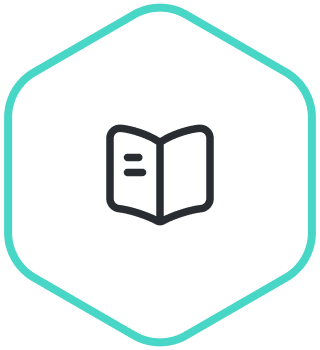The First 90 Days: Your guide to starting a new HR leadership role at an SME
Starting a new HR Leadership role is as exhilarating as it is nerve wracking and no doubt, you’ll want to have an instant impact.
During the interview process you will have picked up on the challenges you may face, but until you join an organisation and start asking questions you won’t gain the full picture.
It's also natural for your team to approach change cautiously; indeed, change can often be unsettling. However much you want to impress, the most important thing in your first 90 days should be to build strong relationships with your team, key stakeholders, and to understand the dynamics across the company.
Why is this important? Well, besides getting a handle on things early on, investing in relationships now, will pay dividends down the road. Plus, it'll make introducing any changes a whole lot smoother. Instead of causing panic, you'll frame it as an exciting step forward for the company.
Here's a suggested breakdown of how to allocate your time during this pivotal period:
Listen and Understand - First 30 Days
The first 90 days present a unique opportunity to delve deeply into the business. As an HR leader you need to understand the business strategy, think commercially, and tie your HR strategy to your company strategy.
First and foremost, it’s all about people. Lean on those around you. Really listen and ask questions to understand more about the business and get their honest view. If you can, spend some time shadowing to experience what different roles are like to get a real insight.
Understanding the Board’s perspective is clearly critical, but you will also need to have your finger on the pulse of the organisation.
Find out from all levels of the business;
- What’s good right now?
- What could be improved?
- How can we make this a more enjoyable business to work in?
What does a CEO expect?
What does a CEO expect?
"Take the time to understand the people and business. Build fantastic relationships across the company to get under the skin and to position yourself as someone the business can trust with news, good, bad or ugly.” Rob Blythe, Co-CEO, Instant Impact
If this is your first time as an HRD, it will undoubtedly feel very different when the buck stops with you. Your peers are now board level and that can feel solitary. One of the most important relationships that you will need to build is with your CEO. Make it a priority to speak with them. Ask what they feel the most pressing issues are and then think about how HR can play a part in mitigating these.
Start with the foundations
To get an in depth understanding of the state of play, look at the four key areas of vision, mission, values and culture.
Rob Blythe, CEO, Instant Impact suggests asking: “What is the current status quo across all those areas? Are they even formalised? Do you know what they are, and moreover do the current employees know what they are?”
If not, these would be great areas to focus on when looking at transformation projects.
Analyse the data
Look at the existing data you may have, from employee surveys, HR dashboards and reporting. Do you have the metrics that you need to form a proper understanding of the business?
“If there are any holes, the gaps can tell you almost as much as the actual data. You can then consider how you go about plugging these and what reporting you need to implement to unlock further insights.” Rob Blythe, CEO, Instant Impact
You’ll no doubt have an idea of the data you’ll want to investigate covering:
- Headcount and Employee Turnover rate
- Talent Acquisition
- Equality, Diversity & Inclusion
- Workforce planning including retention rates and succession planning
- Performance management
- Employee Engagement
Compensation & Benefits
Understanding the whole total rewards package and what’s offered to varying employees will help not only with candidate attraction, but also employee engagement, retention and is a core part of any HR strategy.
Salary Structure and Benchmarking: Review the current salary structure to ensure it is competitive within the industry and region.
Compliance and Regulatory Requirements: Ensure that the company's compensation and benefits practices comply with all relevant laws and regulations, including minimum wage laws, overtime regulations, equal pay laws, and benefits mandates (such as healthcare requirements).
Cost Analysis and Budgeting: Conducting a cost analysis will help you understand the financial impact of the current compensation and benefits programme on the company's budget and where the holes might be.
Talent Acquisition
Getting the right talent, in the right place at the right time is key to fuel company growth. Often in small businesses it’s lower down the agenda and not fully formulated due to the myriad of other priorities in the ever-growing HR to-do list!
However, analysing your current strategy is vital.
- Is there a talent strategy in place or is hiring adhoc and reactionary?
- Is there a standardised process in place?
- Is there a roadmap for upcoming roles?
- Are you over-reliant on agencies, or is the majority of hiring done in house?
- Is there a coherent strategy between HR and TA, is the whole talent lifecycle thought about – the relationship between retention, hiring and employee engagement?
If not, this could be a great opportunity to think differently about how HR and Talent acquisition work together and shape a new way of doing things within the organisation. Completing a talent acquisition audit, or getting a partner to look at this from the outside can be beneficial if you don’t have the capacity to do so.
ED&I
Understanding the current ED&I landscape in your organisation is critical for a high performing business. A report from McKinsey shows that gender diverse companies outperform rivals 48% of the time.
When going through the auditing process make sure that you assess all areas from a ED&I lens. At the very beginning, when reviewing the culture of the organisation, look at it from the viewpoint of underrepresented groups and make sure you talk to a range of employees in your research stage.
A compliance and policy review are also a useful area to focus on to make sure everything included in your employee policy documents is not only fair but equitable.
Making sure that you look at your recruitment process through an ED&I lens also crucially important to make sure you’re getting a range of talent into the organisation.
- Where do we draw applicants from?
- Do we use inclusive language?
- Are there any barriers that might prevent someone from applying?
Engagement and Retention
Having a holistic view of your engagement and retention is important to understanding the culture of your organisation, and feeds into your workforce planning and strategy.
How is engagement measured currently? Are there regular employee surveys going out? If there haven’t been any in a while, setting up a pulse survey to get the lay of the land could be a quick win in the first 90 days and will give you a benchmark to lead on from.
EVP
Taking all the above into account, alongside company values, you can review your current EVP, and the gaps you think might be missing. Taking a holistic and systematic approach, that spans the whole of the employee lifecycle, will help create an attractive employee value proposition.
Technology
As part of your audit you’ll want to assess your tech stack and how it integrates across your business.
The average worker flits between 9 different apps throughout the day, causing a huge productivity drain. Technology is usually implemented to improve efficiency and employee experience, but it could be doing the opposite.
What technology is working well, what isn’t, where are the gaps? Looking at usage reports on the technology can be beneficial to understand whether it’s being used. Asking employees for their feedback on the tools will give you insights from the people using it day to day.
 “Make sure you’re utilising and integrating HR technology effectively. Far too many things are done manually in HR. Don’t fall into the trap, leaving you lumbered with admin tasks. In a small business this can happen easily, not allowing you to focus on strategy and planning.” Louise Fraser, People and Culture Director, Instant Impact.
“Make sure you’re utilising and integrating HR technology effectively. Far too many things are done manually in HR. Don’t fall into the trap, leaving you lumbered with admin tasks. In a small business this can happen easily, not allowing you to focus on strategy and planning.” Louise Fraser, People and Culture Director, Instant Impact.
If you’re looking to create a holistic approach to your HR and Talent strategy, having technology that is properly integrated and seamless can have a huge impact. Imagine a world where your employee data is all interlinked and the insights this could bring.
Output: SWOT Analysis
At the end of this exploratory period you will come away with a wealth of information and insights.
Out of these you can then form a SWOT analysis which will underpin your HR Strategy. Out of the initial insights you’ll also be able to take a view on prioritisation. What quick wins can you implement within your first 90 days to not only build trust but also show the impact you intend to have.
Plan: 60-90 days
Once you have gathered your anecdotal and quantitative insights and pulled together your SWOT analysis, you can go about building your HR Strategy, and the plan that sits behind this.
Prioritisation will be crucial as there will no doubt be far more projects and issues that you’ve identified, vs what can be achieved. Not everything on your SWOT analysis will be able to be implemented straight away or might not even get the go-ahead from the business.
 As Louise Fraser, People and Culture Director, Instant Impact has learnt, “The HR role is so broad and covers so many specialities if you over promise you’ll get stuck, and nothing will get done. Focus on 2 or 3 areas that will be impactful, in line with business goals."
As Louise Fraser, People and Culture Director, Instant Impact has learnt, “The HR role is so broad and covers so many specialities if you over promise you’ll get stuck, and nothing will get done. Focus on 2 or 3 areas that will be impactful, in line with business goals."
Make sure to prioritise based on the overarching business objectives, while also considering any concerns or overlooked issues raised by your team during conversations. These priorities must align with your available resources, be it skills, capacity, or budget.
If you don’t have the capability or capacity to achieve the transformation with your current team, consider opportunities for outsourcing or hiring to expand your team with the skills you need.
It's crucial to establish crystal-clear goals - OKRs (Objectives and Key Results) can be a useful tool to directly tie them into the business's larger objectives. Regular monthly and quarterly reviews will help keep you on the right path.
Engage:
Perhaps the hardest part of the process is getting buy in from key stakeholders and ensuring the business is engaged with your plan.
 “Don’t do projects without temperature checking and getting feedback. Ensure stakeholders from the top and bottom are involved from the start to land key initiatives. You don’t want to go too far down a rabbit hole and your hard work be for nothing if the projects don’t take off.” Louise Fraser, People and Culture Director, Instant Impact.
“Don’t do projects without temperature checking and getting feedback. Ensure stakeholders from the top and bottom are involved from the start to land key initiatives. You don’t want to go too far down a rabbit hole and your hard work be for nothing if the projects don’t take off.” Louise Fraser, People and Culture Director, Instant Impact.
Taking time to build relationships and really listen to the challenges that the business is facing in the first 30 days will set you in good stead for this.
Think about who your cheerleaders are and get them on board first to then help you sell the strategy more widely.
When presenting your strategy always link back to the business goals and how it will ultimately help the business succeed.
Once you have Executive level sign off, you will also need to think about an internal communications plan for the rest of the business taking into consideration how best to deliver messages and change more widely. Our Co-Ceo Felix Mitchell spoke to Rhia Mitchell, Director Executive Communications, Haleon, on how to communicate in uncertain situations. There might be some tough messages that you have to communicate, how will these land and which channels do you need to use to have the most impact?
“"Silence creates uncertainty, uncertainty creates rumour, rumour ruins culture" - Rhia Mitchell
Executing Following the 90 days:
Once you’ve done all the hard work of understanding the business, building relationships and pulling together your HR strategy and plan it’s time to deliver your transformation plan.
Track progress and make sure that you report back to the leadership team and business on how you are against the wider business goals.
Be agile and adaptable, as we know, business plans are subject to change and this will need to be reflected in your HR plan.
“We’ve seen the world changes quickly and that is felt a lot within the world of HR. You will need to constantly keep abreast of changes and make sure you rework plans accordingly, whilst, communicating any changes across the business so that everyone is on board.” Rob Blythe, CEO, Instant Impact.
Learn from others, take advantage of networking opportunities and conferences, there’s nothing like getting advice and insights from peers in the same position as you.
One overarching reflection from Louise Fraser “You can’t effectively manage change unless you bring everyone along with you.”
Lastly, Good Luck! You’ve impressed and done the hard work of getting the role, now it’s all yours to go and execute!






